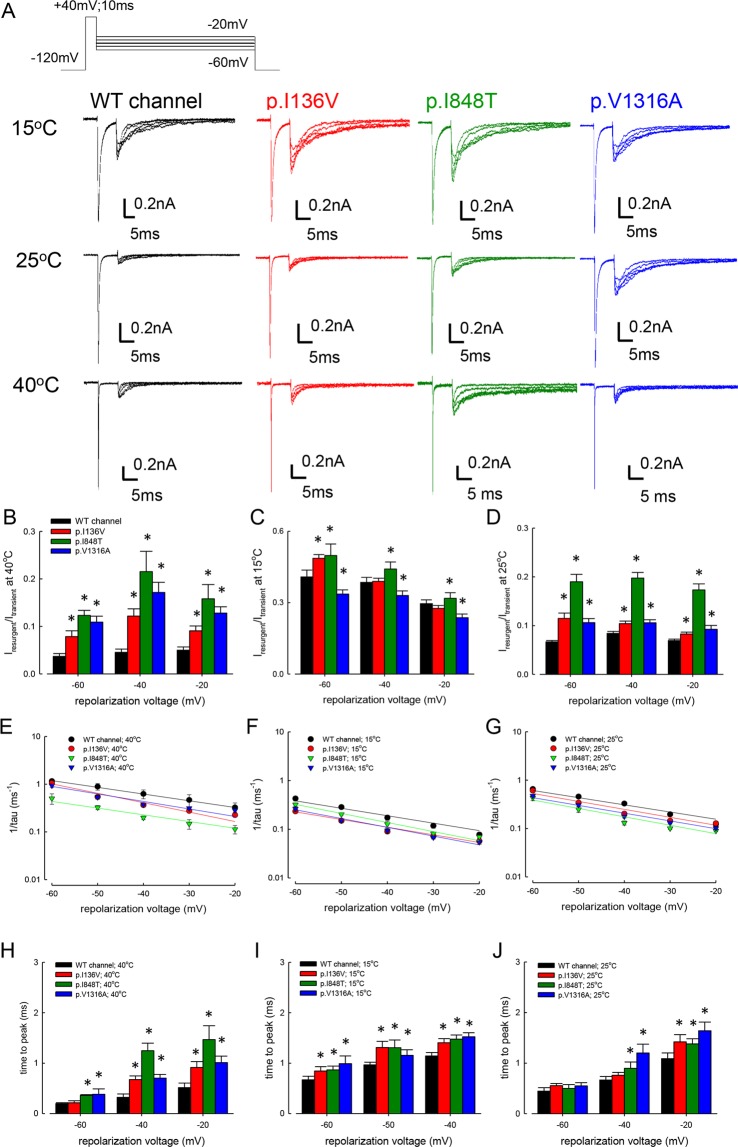Figure 3.
Resurgent currents of WT, p.I136V, p.I848T, and p.V1316A mutant channels at 15 °C, 25 °C and 40 °C. (A) The cells were held at −120 mV, and the resurgent currents were evoked by pulses between −20 mV and −60 mV in 10 mV increment after a prepulse of +40 mV for 10 ms at these different temperatures (15 °C, 25 °C, and 40 °C). Note that we have deliberately chosen a strongly depolarizing and short prepulse for a smaller decay and thus a more complete examination of the resurgent currents14. Also note the much faster kinetics of the currents at 40 °C than at 15 °C. (B) Cumulative results were obtained from the experiments described in part A for the WT and three mutant channels (n = 5 for each measurement). The ratio between the peak amplitude of the resurgent and transient Na+ currents (Iresurgent/Itransient) in the same cell is significantly larger in the mutant than WT channels at 40 °C. *P < 0.05. (C) Cumulative results were obtained from the experiments described in part A. The ratio between the resurgent and transient Na+ currents is significantly larger in the p.I136V, p.I848T, but smaller in the p.V1316A mutant than WT channels at 15 °C (n = 5 for each measurement). *P < 0.05. (D) Cumulative results were obtained from the experiments described in part (A) (n = 5 for each measurement). The ratio between resurgent and transient Na+ currents is significant larger in the mutant than in the WT channels at 25 °C. *P < 0.05. (E–G) Cumulative results were obtained from the same experiments described in part A (n = 5 for each measurement). The inverses of decay time constants (1/tau (ms−1)) of the resurgent currents plotted against the voltage (mV) in semi–logarithmic scales. The lines are linear regressions of the form: 1/tau(V) = A × exp (k × V/25) ms−1. The voltage dependence of the decay kinetics is rather similar in the WT and mutant channels at the three different temperatures. (H–J) Cumulative results were obtained from the experiments described in part A (n = 5 for each measurement). Note that the time to peak of resurgent currents (the time from the end of depolarization prepulse of +40 mV to the resurgent current peak at different potentials) in the mutant channels is evidently longer than that in the WT channels with the repolarization potentials between −20 and −60 mV at 40 °C (right panel), but the difference gets smaller at 25 °C (middle panel) and especially at 15 °C (left panel). *p < 0.05 by Student’s independent t test.

